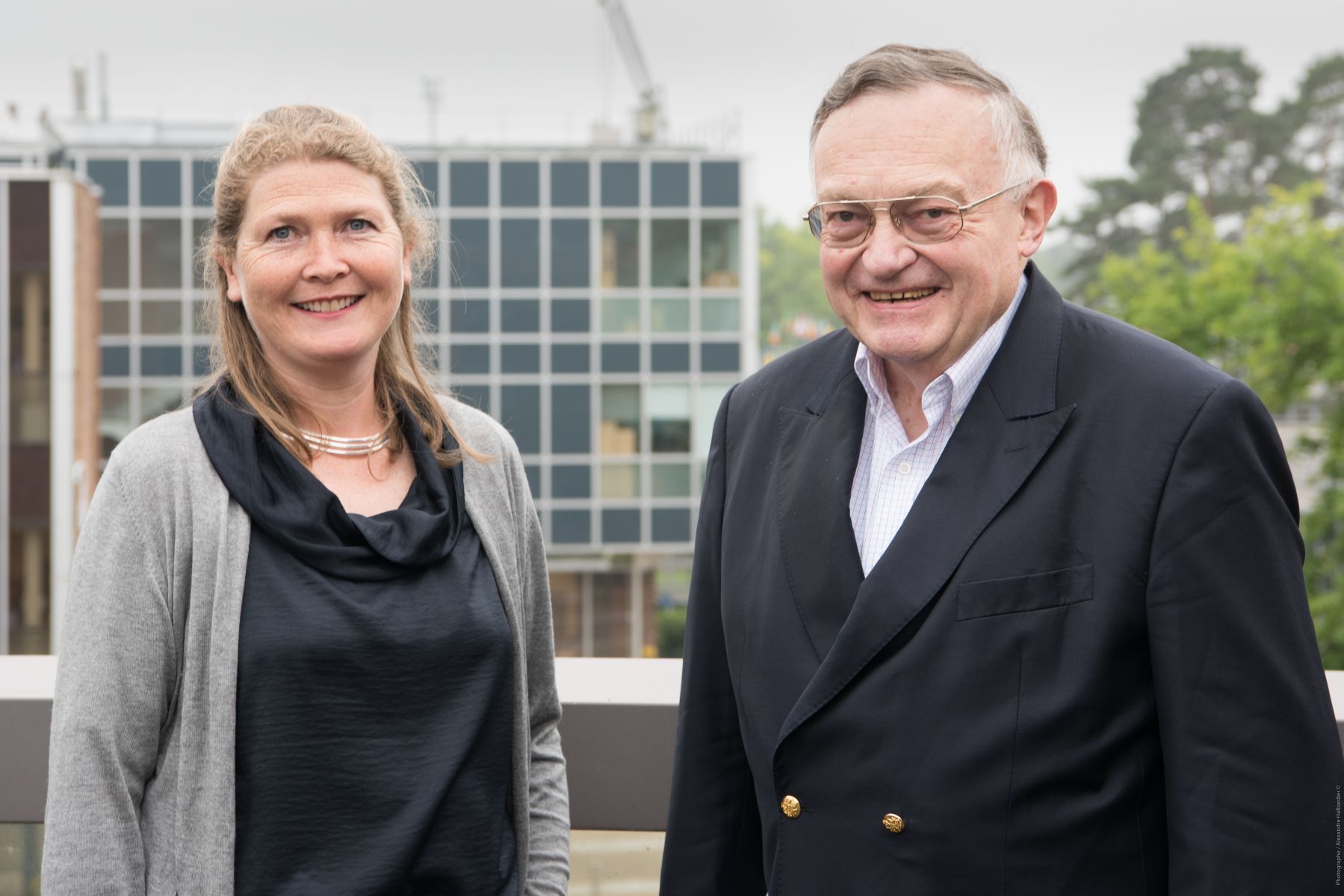Chasing growth can derail even the most well-meaning CEOs—and their companies along with them. This desire for growth at all costs exacts a steep toll, diverting focus from genuine value creation, diminishing resilience in the face of disruption and accelerating decline by prioritizing the illusion of growth over adaptive capabilities. However, there is another path. We spoke with Yves Doz and Keeley Wilson, authors of Escaping the Growth Curse: The Path to Stronger Corporate Strategy, to explore their approach to ending the growth curse.

What inspired you to write Escaping the Growth Curse?
The inspiration stemmed from our research on the rapid downfall of seemingly thriving companies. It became evident that a lack of long-term strategy and poor relationships between management and the board were common denominators. This realization, coupled with a friend’s concerns (Andrea Cuomo, a senior executive with STMicroelectronics) about board strategy and CEO succession, propelled us to explore this critical issue further.
We discovered that chief executives often prioritize short-term gains over long-term sustainability, especially when they are under pressure from shareholders to deliver strong gains. Some of the tell-tale destructive behaviors that can be signs that a CEO is trying to keep up the appearance of growth are a flurry of M&A activity, cutting strategic expenses such as R&D, not renewing product lines, share buybacks and scaling back quality to focus on lean manufacturing or outsourcing—and there are often combinations of these being used.
What is important is understanding what leads to these behaviors: excessive pressure from shareholders for short-term returns; keeping the board happy that all is well; meeting personal performance pay targets; and showing the wider world you are a successful CEO—especially if the CEO aspires to be a CEO elsewhere or to be appointed to a board in the future.
This puts the onus on the board to foster strategic foresight and agility, so CEOs don’t wind up in these scenarios.
You make a distinction between the layers of strategy—the activity systems piece that is management’s responsibility and then “strategic direction” that is the board’s domain. Can you define strategic direction for us?
It’s the long-term strategic ambition – in other words, the broad strategic space the company aims to occupy in five years plus. It’s about what type of company you want to be and the strategic advantage you want to build.
Defining this, based on a combination of company competencies, strategic assets, foresight, technology advances, demographic trends, geopolitical issues, regulatory trends and developing ESG criteria, enables the executive to develop short-term strategies that align with and support the strategic direction of the firm. This leaves less room for strategic crises and falling victim to the growth curse!
How do you view the role of the board in addressing the growth curse?
The board, equipped with a broader perspective and long-term interests, is better positioned to steer companies toward sustainable growth. However, this requires a shift in mindset and a commitment to strategic governance.
Given the increasing call for board involvement in strategy, what do you think will encourage more board members to embrace a more strategic role?
This is a systemic challenge that requires a systemic response, with a part for every party involved. Government and regulations could play a part in ensuring that codes of governance and the board’s fiduciary duties also encompass strategic responsibility.
Shareholders also play a role. While certain groups of shareholders are at the root of the problem, others could be much more vocal in calling for change. For example, the large passive index funds – who by 2021 were estimated to own almost 22 percent of S&P 500 firms and by their very nature have a more long-term interest.
It also requires receptive CEOs who understand and welcome the value an effective board can bring to the strategy process and to relationships with investors.
Finally, for board members themselves, they need to ensure they have an enlightened chair who is willing to lead differently and encourage directors to push on what were previously seen as barriers or “swim lanes.”
With the time directors are spending on board matters each year continuously rising, how can boards effectively balance their time commitment amid rising demands for more strategic governance?
Prioritizing fewer board appointments per individual and ensuring a diverse range of expertise can enhance board effectiveness. Additionally, leveraging internal groups or consultants for certain activities can alleviate time constraints.
Getting board composition right will also help: Strategic minds, cognitive diversity, T-shaped skills/knowledge, and industry experience will all enable directors to work more effectively together.

What’s the role of the chair in establishing a level of psychological safety on the board to help pave a path for more board involvement in strategy and for individual directors to speak up when they may be the minority or the only dissenter or questioner?
A good chair has to be impartial and above the fray: As we say in the book, they need to be consummate diplomates – always calm and rational – even when faced with a crisis.
It’s all too common for new board members (particularly when young or more junior) to shy away from speaking up, but a good chair should make a point of encouraging open dialogue and ensure everyone is heard through a culture of transparency, openness and honesty.
It is much more difficult to be effective if the chair is also the CEO – there are huge potential conflicts of interest and a power imbalance that is unlikely to leave room for board genuine dialogue.
Boards often rely on effectiveness reviews to gauge their performance. Should strategic direction become one of those metrics in the future?
It’s obviously important to assess the group processes and dynamics of a board and individual contributions but these tend to be focused on the “noses in fingers out” approach.
To really understand board effectiveness in overcoming the growth curse means looking at the board’s ability to assess merging discontinuities and disruptions along with the firm’s strategic assets and strategic agility – all of which contribute to the strategic direction the board sets.
In terms of assessing the quality of the strategic direction the board has defined, you need to ask whether it is feasible, original and unique. And, importantly, whether the board has chosen a CEO who can lead the company in that direction.
Let’s say a company follows the blueprint in your book—but even the best-laid strategy can’t always pan out as expected. How do you maintain the momentum to stick with a strategic direction approach to governance if your initial effort isn’t a rousing success?
First – we need to define “success.” For many years, this has been too narrowly defined as meeting quarterly targets to keep shareholders happy. Now we have to think of success more widely in terms of longer-term value creation, contributing to a better planet, better societies and better workplaces.
Our proposal is about strengthening governance to provide a long-term framework in which a company and all of its stakeholders can flourish. Within this, there is room for bumps in the road.
Any refocus is going to take time and cause some pain, especially to certain groups of short-term focused shareholders. Just think of Ginni Rometty’s transformation of IBM – she and the board were very open with shareholders that moving from a strategy crisis to a long-term sustainable strategy would take years of pain – but they made it.
So, it’s important for the board not to panic and resort to knee-jerk reactions– but instead to constantly question and challenge what it is doing and the choices it makes—an iterative process of defining the strategic direction.
One of your final lines in the book is: “Making governance more strategic is not just about ensuring companies are better managed, but it’s about making them better citizens of the world. It’s a lever for building better societies, making the world a better place and for protecting us against the greed unleashed by the folly of financialization, and sometimes that of successful CEOs.” It’s a powerful statement and a powerful vision. What do you hope leaders take away from your book in their pursuit of better governance and societal impact?
We hope that this serves as a wake-up call—a reminder of the paramount importance of strategy. In the frenzy of day-to-day operations, it's easy to lose sight of the bigger picture. Yet, strategy matters. We must resist being consumed by short-term demands; they cannot dictate our every move.
We envision a constructive dialogue on strategic matters, fostering mutual respect and understanding between chairs, board members, CEOs and management. By prioritizing strategic discussions alongside financial ones, we can unlock numerous benefits and steer toward a more sustainable future.





